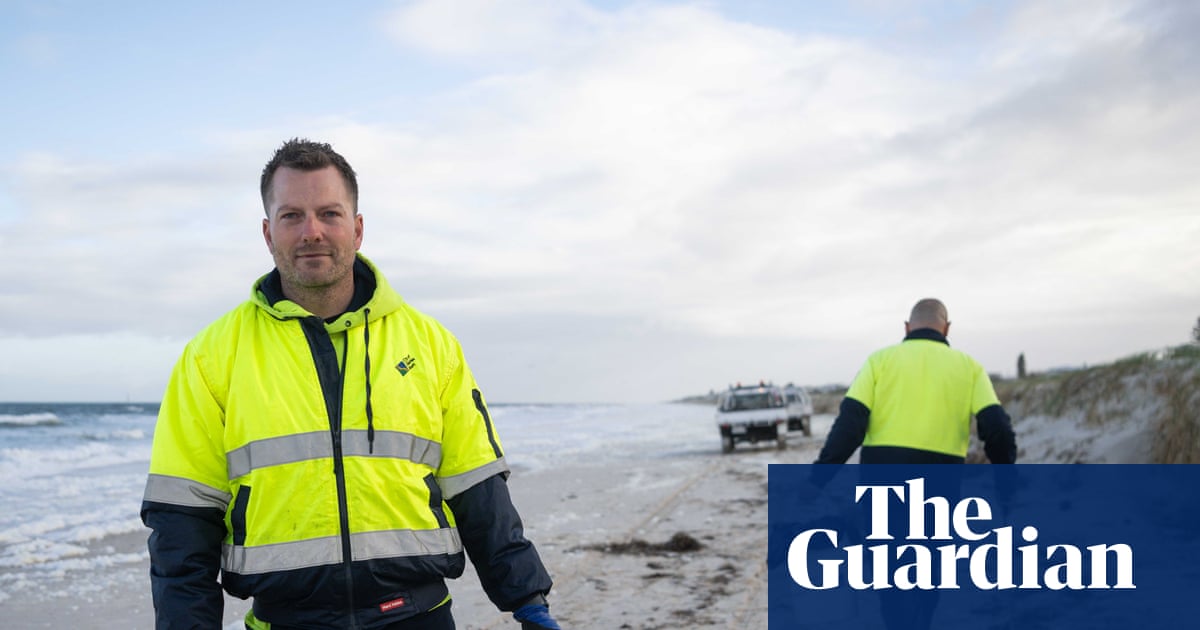
"Over 11km of coast from Grange to West beach, teams from the City of Charles Sturt fill bags with dead fish and animals that will end up as compost, collecting between 40kg and 200kg in a single day. A map showing the area of coast where teams from the City of Charles Sturt clean up They arrive before dawn and the daily walkers and their dogs, working to make the afflicted beaches more pleasant."
"The circling, squawking gulls show where the bodies are buried. Early on a cold winter's day, mucky foam and seaweed cover the sand at Grange beach and the dead fish and leafy sea dragons. Every morning, council workers clear out the carnage left by the algal bloom killing South Australian marine life and causing collective trauma in the community."
"SA's algal bloom probably started in January and, over months, has grown to more than 4,500 sq km. By March, surfers complained of a mysterious sea foam, along with irritated eyes and hacking coughs. The algae species responsible was identified as Karenia mikimotoi. By July it had hit metropolitan beaches: suddenly many more people were witnessing the foam, the piles of seaweed as kelp died off and the animal deaths."
An algal bloom likely beginning in January expanded to over 4,500 sq km, dominated by Karenia mikimotoi. The bloom produced mucky foam, irritated eyes and coughing in humans, and caused widespread mortality among fish, kelp and other marine animals. iNaturalist logged about 34,000 dead animals from roughly 480 species. From Grange to West Beach, City of Charles Sturt teams clear carcasses daily, collecting 40–200 kg per day and bagging remains for compost. Community volunteers sometimes sort remains into piles. The bloom has caused visible kelp die-off and trauma for coastal communities and regular beach users.
Read at www.theguardian.com
Unable to calculate read time
Collection
[
|
...
]